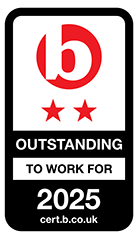Our recent webinar titled “Trusts: What are they and how can they work for me?” covered a brief outline of what a trust is and the various types of trusts and their uses before considering some of the key tax planning opportunities provided by trusts.
Trusts have been around for many years and offer further benefits beyond tax planning. These include:
-
The ability to separate rights to income and capital, i.e. to enable an individual, the beneficiary, to receive income from an asset without passing that asset to them outright
-
Protection of capital from creditors should a beneficiary fall into financial difficulty
-
Protection of capital on a marriage break up
-
Protection of accumulated family wealth for future generations.
However, as tax advisers, we will often recommend the use of trusts when providing holistic tax advice, particularly in relation to Capital Gains Tax (CGT) and Inheritance Tax (IHT) planning. We set out below a few of the circumstances highlighted within the webinar where the use of a trust could save tax.
Gift of property
– where an asset is gifted, a chargeable disposal for CGT purposes is deemed to have occurred as if the asset had been sold for its current market value. For an outright gift, the ability to hold over the gain arising on this gift is largely restricted to gifts of assets that are either shares in a qualifying trading company or an asset used in the trade carried on by the person making the gift. However, from 2006, gift hold over relief is available for all gifts made into trust. This allows an individual to gift an asset standing at a large unrealised gain, such as a holiday home or investment property, without incurring an immediate CGT liability. Care will need to be taken that the value of the gift does not exceed the individual’s IHT nil rate band at the time of the gift, but if they have made no previous gifts into trust within the preceding seven years, property worth up to £325,000 can be transferred into a trust CGT and IHT free at the point of entry.
Getting children on to the property ladder
– parents looking to help their children on to the property ladder could use a trust to good effect, particularly when compared to the alternative of purchasing and owning the property themselves. Parents owning the property occupied by the child will have to incur the 3% SDLT surcharge on additional properties, will have the asset within their estate for IHT purposes and be liable to a CGT liability on a later transfer or sale as Principal Private Residence (PPR) Relief will apply as it has not been their main home. As an alternative, if funds were placed in a trust which purchases the property, there will be no IHT payable (providing the value is below the nil rate band of £325,000 [or £650,000 if both spouses were to contribute]), the SDLT surcharge will not apply if the child is over 18 and owns no other property and PPR relief would be available whilst the child occupies the property (note, this relief would not be available if an existing property was gifted into the trust and holdover relief was claimed).
Planning for school/university fees
– trusts can provide a very tax efficient means of paying for school and university costs, particularly where income producing assets are settled into trust. This income can then be distributed to the beneficiaries to utilise their own personal allowances and reclaim any excess tax paid by the trust on the income. Care needs to be taken to ensure that the rules relating to minor children of the settlor benefiting from such arrangements, which makes this attractive tax planning for grandparents wishing to assist with grandchildren’s education costs.
Will trust planning
– trusts can also be created under the terms of a will, and a flexible will trust can be particularly tax-efficient, enabling IHT-friendly assets which qualify for Business Property Relief (BPR) or Agricultural Property Relief (APR) to be passed into a discretionary fund within the trust and remaining assets to be left on a life interest trust for the benefit of the surviving spouse, such that no IHT is due on death. The benefits of such an arrangement continue, including the possibility of the life interest trust purchasing the IHT friendly assets from the discretionary fund to enable a potential future claim for BPR or APR, or making loans to the surviving spouse, which as they are spent reduces the value of their estate and the subsequent IHT exposure. These trusts also protect the family assets should the surviving spouse remarry or rewrite their own will after the deceased spouse’s death.
If you would like to discuss how trusts could help you with tax planning, or any other tax matters, please get in touch.
This article is from the latest edition of our Agricultural Briefing. To receive future copies of any of our newsletters directly to your inbox, please visit our preference centre to register your interest.
If you have any questions about the above, or would like more information specific to your circumstances, please enter your email address below and we will get in touch:
















